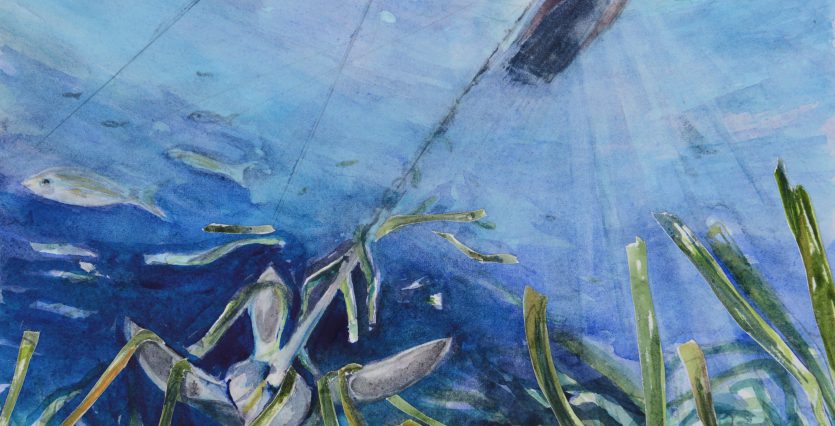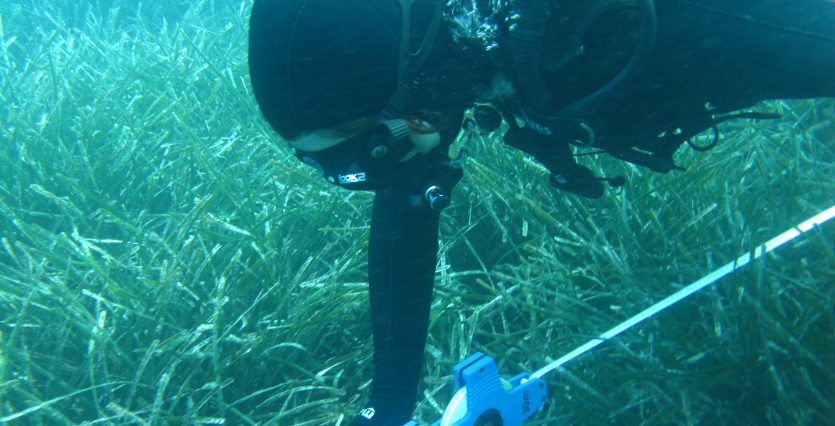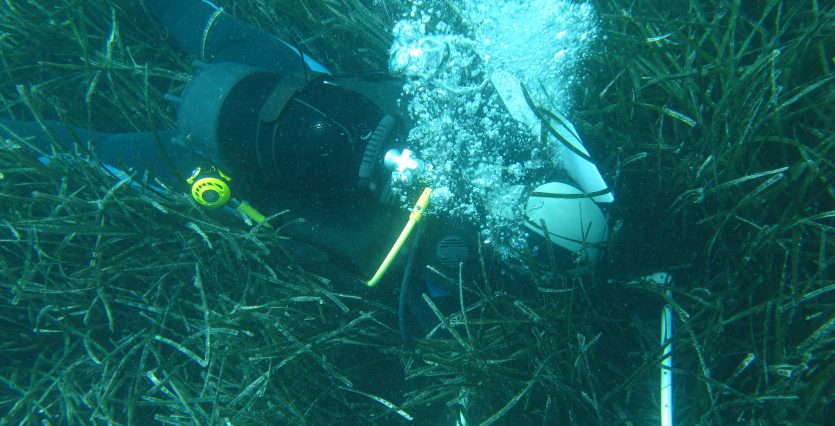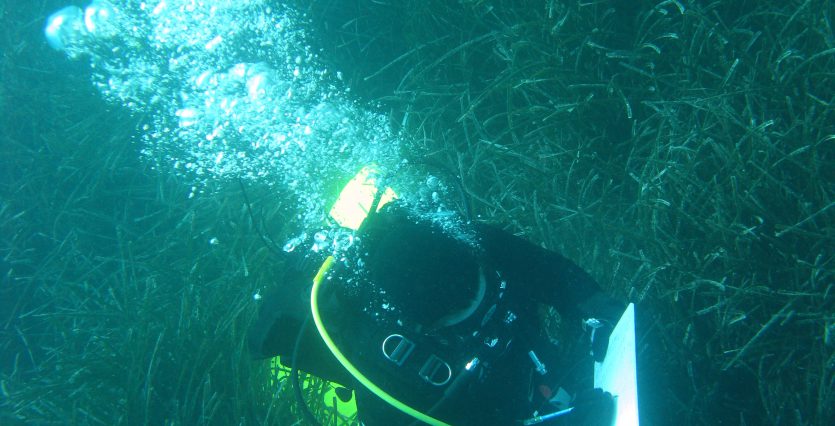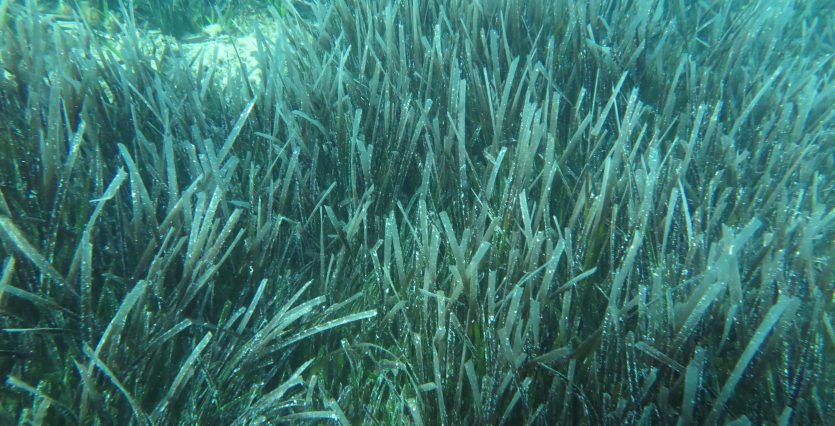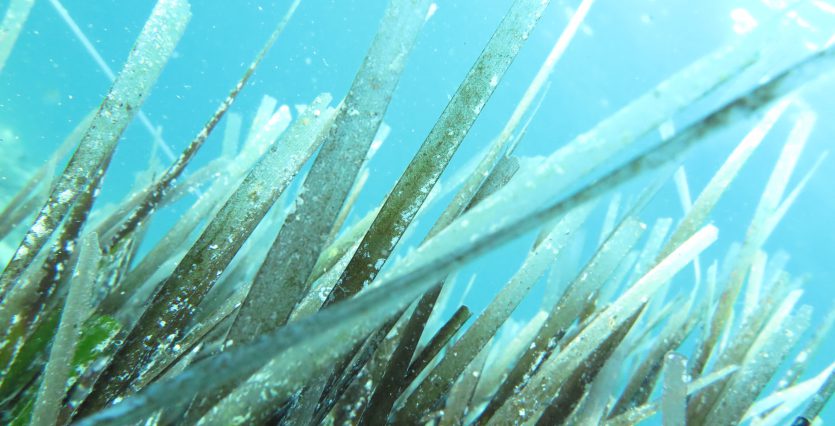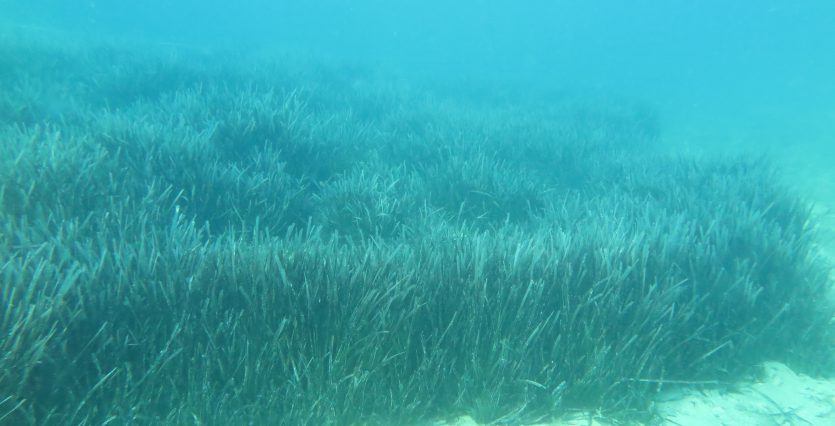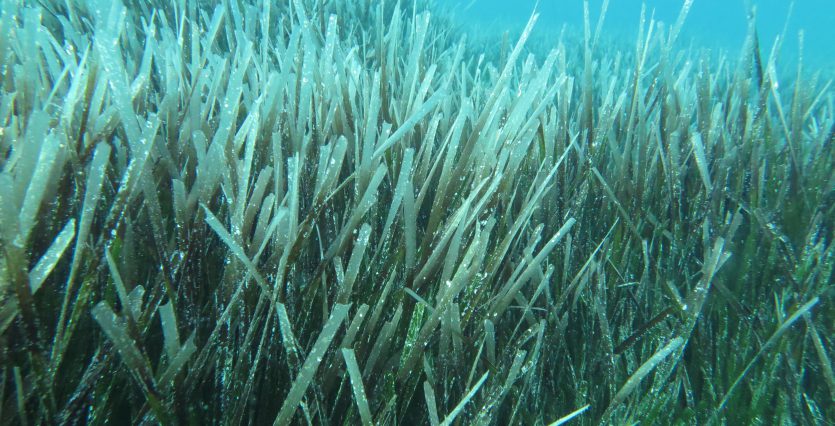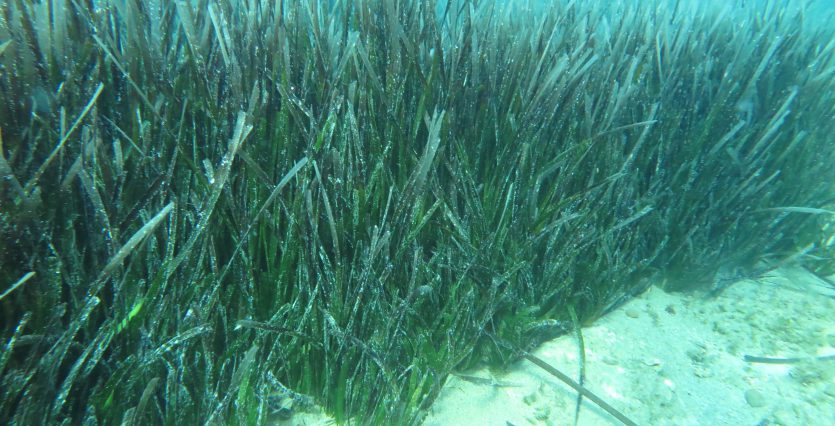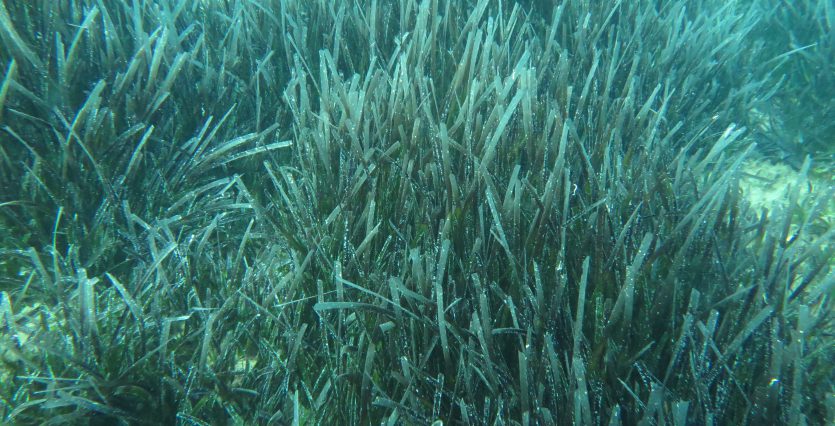There are real underwater forests in the Mediterranean Sea. Dense meadows of Posidonia (Posidonia oceanica) or Neptune grass, provide habitat, breeding and nursery grounds for many species. Moreover, they are an important food source. Their exceptional importance is also in maintaining coastal equilibrium by stabilizing the sea bottom, reducing beach erosion and producing up to 14 liters (half a cubic foot) of oxygen per square meter (square yard) per day.
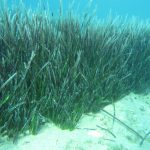 Posidonia is a flowering plant, not an alga (algae do not have flowers and fruit). It grows very slowly — only 1 centimeter (0.4 inch) per year. It is endemic to the Mediterranean Sea, where it can be found growing in clean, unpolluted waters from near the surface to depths of about 35 meters (115 feet). It is a very fragile plant and also endangered. For all these reasons, it is a legally protected species.
Posidonia is a flowering plant, not an alga (algae do not have flowers and fruit). It grows very slowly — only 1 centimeter (0.4 inch) per year. It is endemic to the Mediterranean Sea, where it can be found growing in clean, unpolluted waters from near the surface to depths of about 35 meters (115 feet). It is a very fragile plant and also endangered. For all these reasons, it is a legally protected species.
The role of Posidonia meadows in maintaining the balance of the marine environment is immeasurable. Therefore, they are classified as a priority habitat within Europe’s Natura 2000 network, the largest coordinated network of protected areas in the world.
Anchoring in Posidonia meadows is both damaging and unsafe!
Anchoring has a strong negative impact on the Posidonia meadows. It tears the Posidonia rhizomes (rootstalks) and stems at an average of 34 bundles of rhizomes per anchor (each rhizome has about five leaves). The regeneration of the meadows is much too slow to compensate for this damage.
In addition, anchoring in Posidonia meadows is inefficient, insecure and unsafe. At the smallest traction, the anchor tears the shoots free and slips on the Posidonia leaves, causing more damage to the meadows as the anchor drags. Choose sandy areas for anchoring.
Six steps to correct anchoring
- The anchor size has to suit the size of the boat.
- Approach the anchorage into the wind, identify a clear bottom zone (sand bottom) and avoid anchoring in Posidonia meadows.
- Throw the anchor when the boat is fully stopped.
- Release the anchor line (to an appropriate scope) while the boat is slowly drifting backward.
- Wait until the bow turns into the wind, then check if the anchor holds.
- Upon leaving, move the boat to the position directly above the anchor, then pull up the anchor.
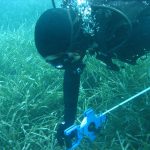
Use minimal impact practices
Improper anchoring, discharged bilgewater, littering, speedboats and various human activities are harmful to the natural environment. As stewards of our oceans, we divers must act responsibly to prevent irreparable damage to this fragile and diminishing ecosystem.
- When anchoring, use techniques and equipment that reduce environmental impact.
- Equip the vessel with a system for retention of bilgewater.
- Respect fishing regulations.
- Dispose of all waste in ports and not in the sea.
Caulerpa – invasive algae that threaten Mediterranean biodiversity
Caulerpa taxifolia and Caulerpa racemosa are invasive tropical algae. They represent a significant threat to the Mediterranean marine ecosystems because of their fast growth and absence of predators. An anchor thrown in an area invaded by Caulerpa spp. disperses dozens of cuttings, which increases their spread. Avoid anchoring where these algae grow. If you find fragments of Caulerpa spp. on the anchor chain or anchor, dispose of it in a trash container. Do not return it to the sea!


